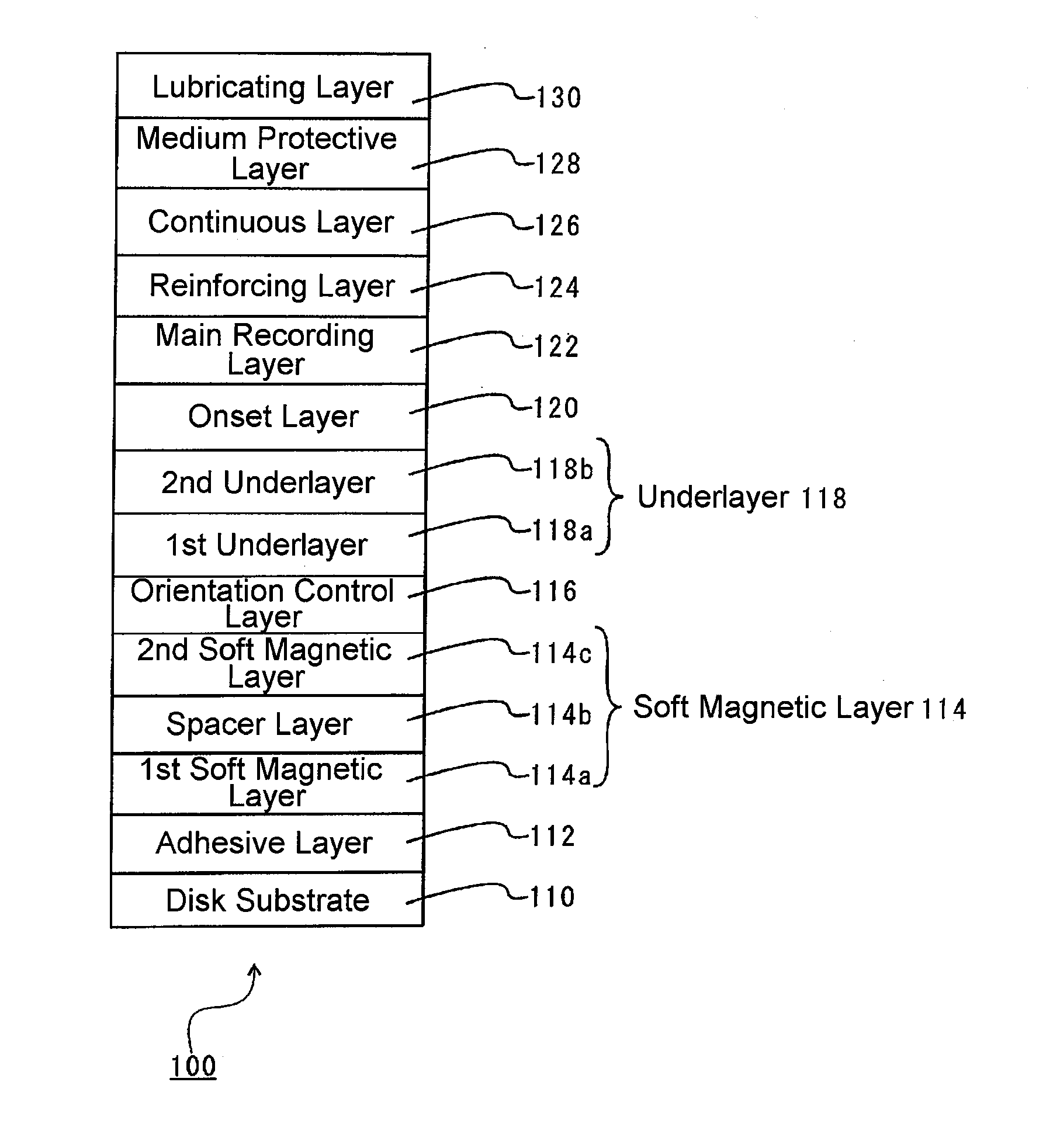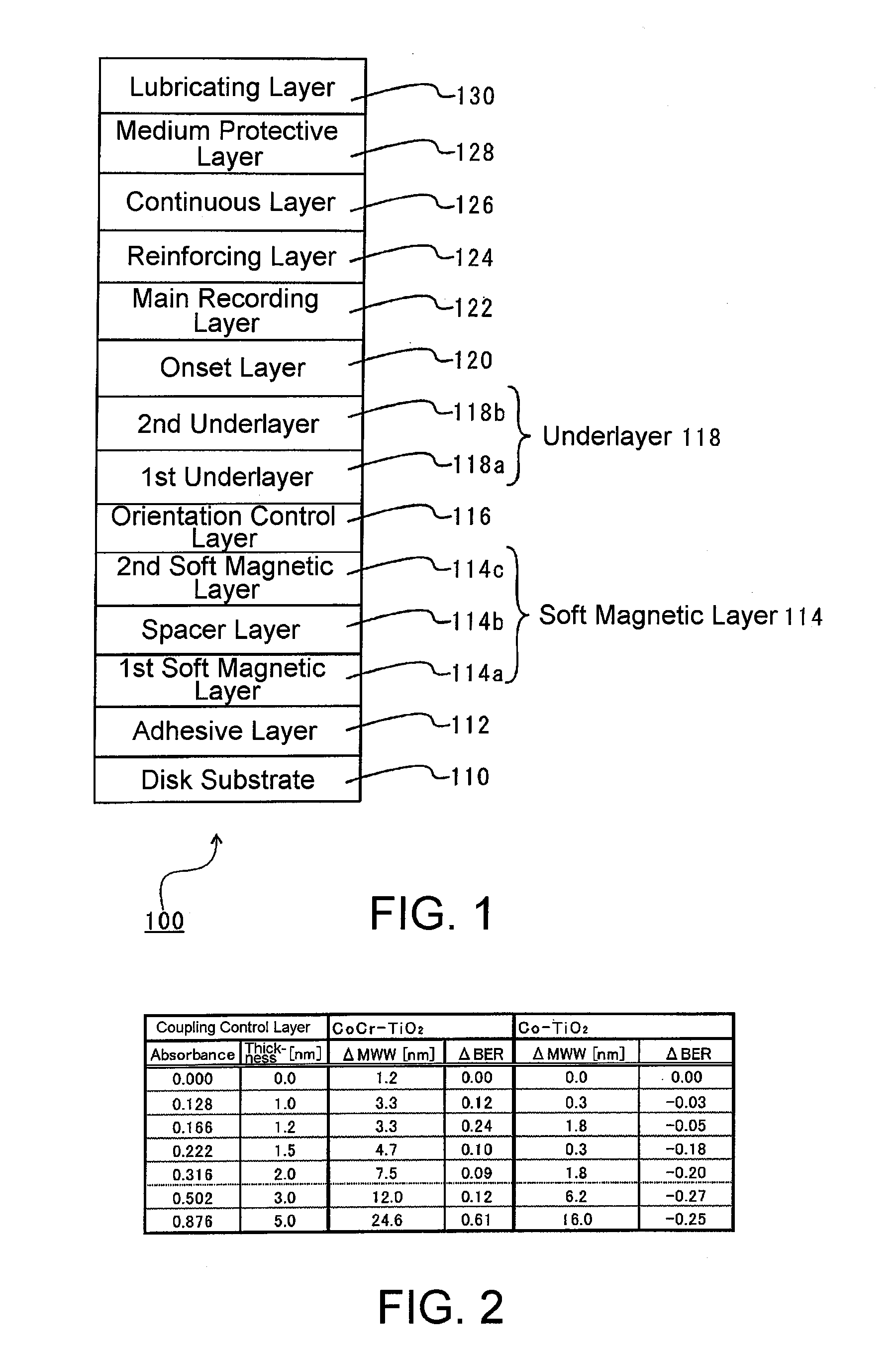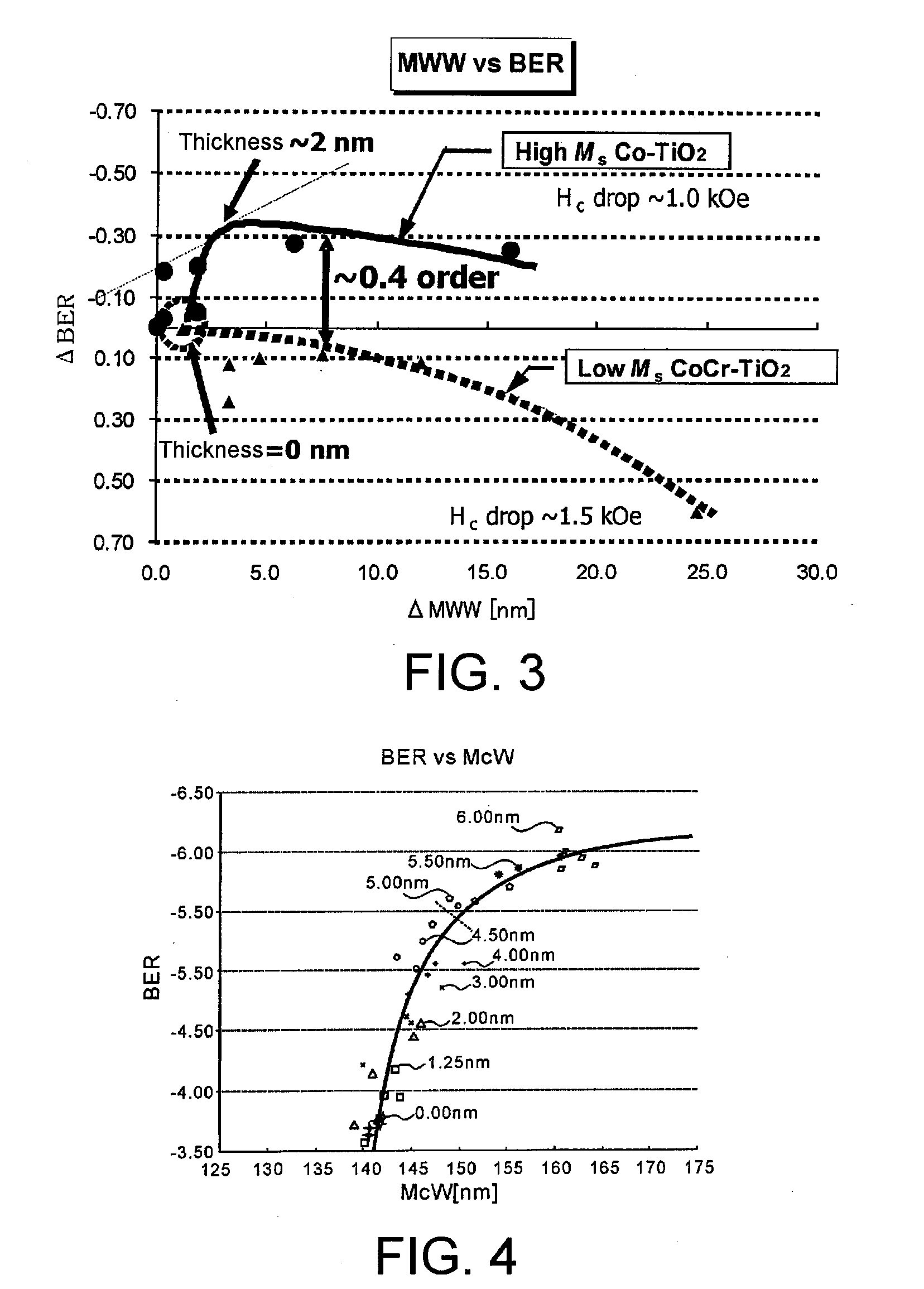Perpendicular magnetic recording medium and perpendicular magnetic recording medium manufacturing method
- Summary
- Abstract
- Description
- Claims
- Application Information
AI Technical Summary
Benefits of technology
Problems solved by technology
Method used
Image
Examples
example 1
[0070]Herein, an amorphous aluminosilicate glass was molded into a disk shape by direct press, thereby producing a glass disk. This glass disk was ground, polished, and chemically strengthened in sequence, thereby obtaining a smooth nonmagnetic disk substrate in the form of a chemically strengthened glass disk. The glass substrate was a 2.5-inch magnetic disk substrate having a diameter of 65 mm, an inner diameter of 20 mm, and a disk thickness of 0.635 mm. Herein, the surface roughness of the obtained glass substrate was measured by an AFM (atomic force microscope) and it was confirmed to be a smooth surface with Rmax of 2.18 nm and Ra of 0.18 nm. Rmax and Ra follow Japanese Industrial Standard (JIS).
[0071]Then, using a sputtering film forming apparatus, the adhesive layer 112, the soft magnetic layer 114, the orientation control layer 116, the underlayer 118, the onset layer 120, and the main recording layer 122 were formed in sequence on the disk substrate 110 by DC magnetron spu...
example 2
[0084]The BER depends on not only the thickness of the reinforcing layer 124 described above, but also the thickness of the continuous layer 126.
[0085]FIG. 4 shows the relationship between McW and BER obtained by changing the thickness of the continuous layer 126 using the basic structure shown in Example 1. Herein, the McW is the sum of the recording track width MWW and the write fringing (erase width). In this event, the thickness of the main recording layer 122 was 12 nm.
[0086]Referring to FIG. 4, when the thickness of the continuous layer is 5 nm or less, it is possible to obtain a sharp improvement in BER with respect to an increase in McW. In a region where the thickness is 5 nm or more and 10 nm or less, although an improvement in BER is expected, an increase in McW is also induced. Therefore, the continuous layer 126 is set to 10 nm or less, preferably 5 nm or less.
[0087]From Example 1 and Example 2 described above, when the reinforcing layer 124 is 2 nm or less and the cont...
example 3
[0088]In this embodiment, when Co—TiO2 is inserted as the reinforcing layer 124, there is also exhibited an effect that the erase width is also reduced.
[0089]FIG. 5 shows the relationship between the thickness of the reinforcing layer 124 and the normalized write fringing amount ((McW-MWW) / MWW). According to FIG. 5, in a range in which Hc of the perpendicular magnetic recording medium 100 does not decrease, if the thickness of the reinforcing layer 124 is increased, the normalized fringing amount, i.e. the erase width, decreases without causing a change in BER. The results of this qualitatively agree with the LLG calculation results.
[0090]According to the perpendicular magnetic recording medium 100 described above, the reinforcing layer 124 is provided between the main recording layer 122 and the continuous layer 126 so that it is possible to improve the S / N ratio of the perpendicular magnetic recording medium 100 and to reduce the write fringing by the new configuration. Therefore,...
PUM
 Login to View More
Login to View More Abstract
Description
Claims
Application Information
 Login to View More
Login to View More - R&D
- Intellectual Property
- Life Sciences
- Materials
- Tech Scout
- Unparalleled Data Quality
- Higher Quality Content
- 60% Fewer Hallucinations
Browse by: Latest US Patents, China's latest patents, Technical Efficacy Thesaurus, Application Domain, Technology Topic, Popular Technical Reports.
© 2025 PatSnap. All rights reserved.Legal|Privacy policy|Modern Slavery Act Transparency Statement|Sitemap|About US| Contact US: help@patsnap.com



